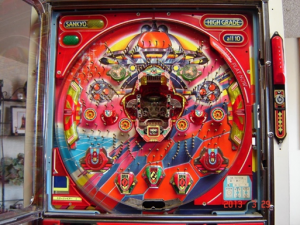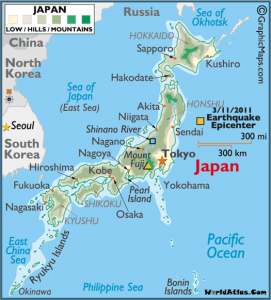Bastiaan “Bart” M. Drees, July 4, 2016

I traveled to Sapporo, Japan, in the summer of 2002 to give a talk* at the Social Insect Conference about the impact of red imported fire ants in Texas. I did not spend a lot of time actually listening to other talks presented at the conference. There was just too much to do and see.
The market was only a few blocks away, where I could sit in a sushi bar and pull plates cleverly marked with prices of various sushi preparations from a play train track running above the counter. When I was there yesterday, Japanese patrons stared, pointed and laughed at me because I soaked all of my entrees with way too much wasabi and soy sauce. There were other side trips during the conference, like going to see an active volcano nearby.
One evening, my colleague, Dr. Brad Vinson, and I decided to walk all the way to the Sapporo Beer Headquarters. There, they had a bar and restaurant. You could pay money to sit and drink as much of their brew as you wanted in an hour! And we did. After we were well lubricated, we ordered an on-table hibachi and cooked steak ourselves for dinner. We were both in fine form when we began stumbling back to our conference center rooms.
On the way, we came across a Japanese gambling hall advertising Pachinko (パチンコ), a type of mechanical game originated in Japan and used as both a recreational arcade game and much more frequently as a gambling device (https://en.wikipedia.org/wiki/Pachinko).
Since it was on the way back to the hotel, we went inside out of curiosity and found empty chairs in front of the games. We had NO CLUE how to operate the games. Around the darkened room, Japanese men and some women sat tethered to their machines, smoking heavily, and pouring coins into the slots. Bells and gaming noises could be heard as many machines took patrons’ money. We asked an attendant what to do in English and tried to understand his limited response.
OK, put the coin in the slot. Ball bearing sized (¼ in. diameter)balls rolled into a shooting area, and a spring-loaded launcher sent the balls up into a maze of lights, obstacles and “targets” where points could be earned and returned for cold, hard cash (yen, each worth about a US dollar).
We got some change together, and like when I gambled in the US, I expected to lose about $10 and stop. Instead, when I started flipping the levers to keep the balls in play, lights started flashing, and my machine started making all sorts of noises like ringing bells. The balls would not come out of play and kept hitting stuff that activated more lights and noise. This went on for more and more minutes, attracting attention from the bored Japanese players close by. I was already loose, but I now broke up laughing so hard and loud that I could hardly sit in my chair and operate the levers… And then the money flowed out into the trough – $80 yen in about 10 minutes. Nearby players looked at me in disgust as they saw my fortune grow.
Brad and I stumbled out of the arcade and managed to find our way back to our rooms, me with a pocket full of coins that did not feel real. I’m sure I used up more than my share of life’s allocated luck unintentionally. But it sure was fun and an experience of a lifetime.
* Drees, B. M., S. B. Vinson, and C. Lard. 2002. The economic impact and management of invasive fire ants in Texas. XIV International Congress of the International Union for the Study of Social Insects (IUSSI), The Golden Jubilee Proceedings, Sapporo, Japan, July 27 – August 3, 2002. P. 97)
